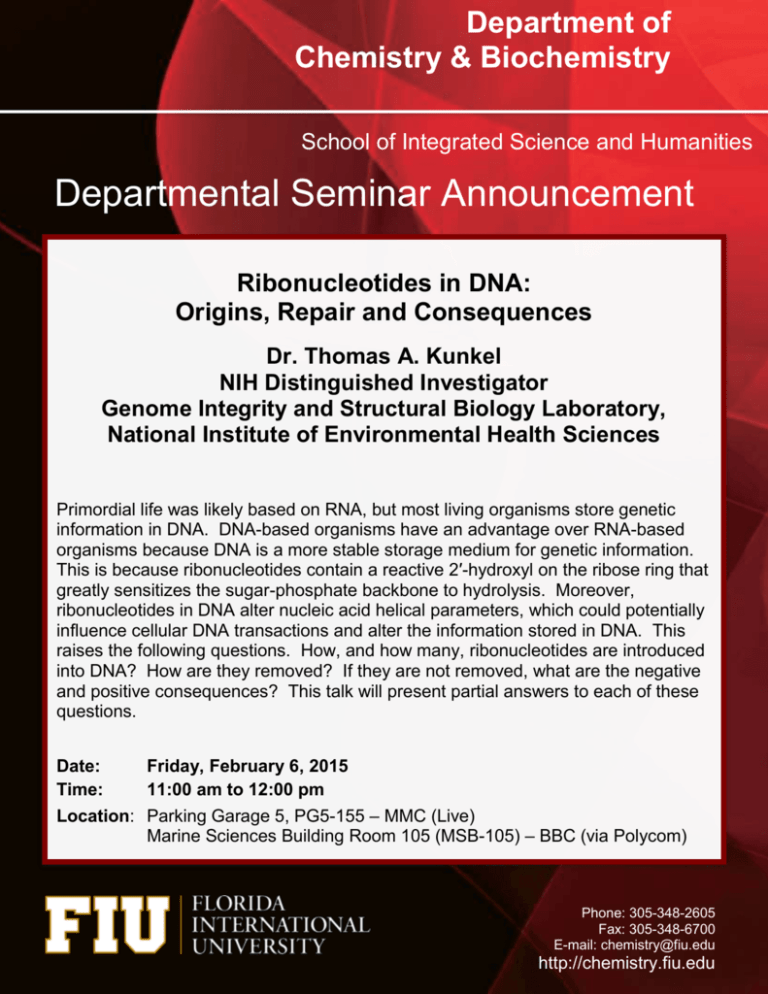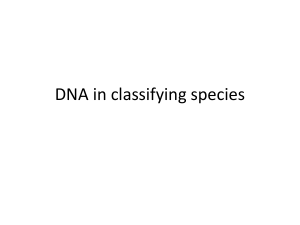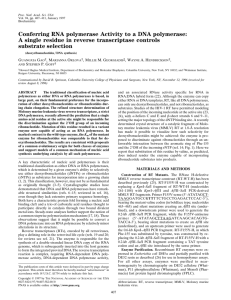Ribonucleotides in DNA - Department of Chemistry and Biochemistry
advertisement

Department of Chemistry & Biochemistry School of Integrated Science and Humanities Departmental Seminar Announcement Ribonucleotides in DNA: Origins, Repair and Consequences Dr. Thomas A. Kunkel NIH Distinguished Investigator Genome Integrity and Structural Biology Laboratory, National Institute of Environmental Health Sciences Primordial life was likely based on RNA, but most living organisms store genetic information in DNA. DNA-based organisms have an advantage over RNA-based organisms because DNA is a more stable storage medium for genetic information. This is because ribonucleotides contain a reactive 2′-hydroxyl on the ribose ring that greatly sensitizes the sugar-phosphate backbone to hydrolysis. Moreover, ribonucleotides in DNA alter nucleic acid helical parameters, which could potentially influence cellular DNA transactions and alter the information stored in DNA. This raises the following questions. How, and how many, ribonucleotides are introduced into DNA? How are they removed? If they are not removed, what are the negative and positive consequences? This talk will present partial answers to each of these questions. Date: Time: Friday, February 6, 2015 11:00 am to 12:00 pm Location: Parking Garage 5, PG5-155 – MMC (Live) Marine Sciences Building Room 105 (MSB-105) – BBC (via Polycom) Phone: 305-348-2605 Fax: 305-348-6700 E-mail: chemistry@fiu.edu http://chemistry.fiu.edu









